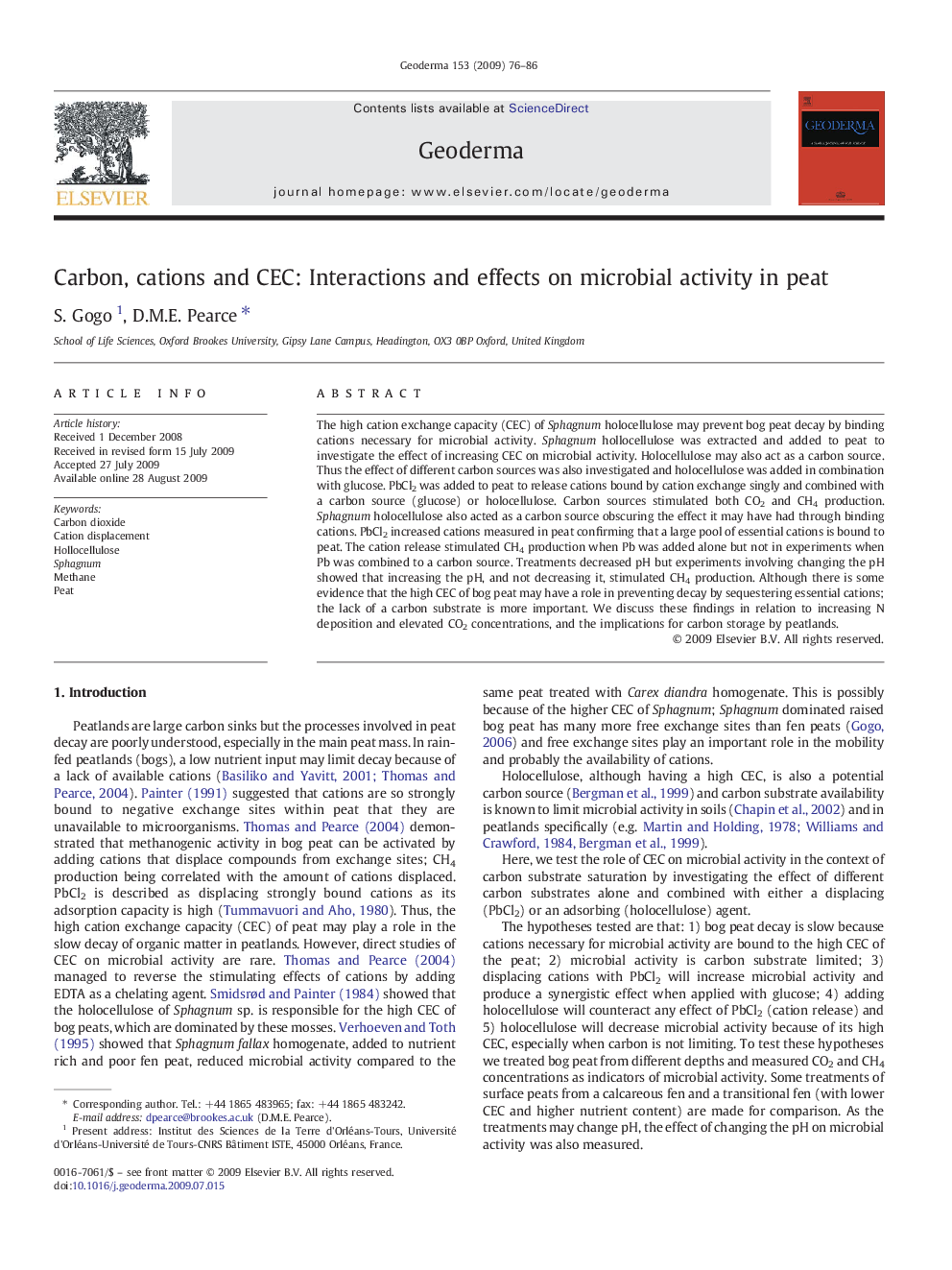| کد مقاله | کد نشریه | سال انتشار | مقاله انگلیسی | نسخه تمام متن |
|---|---|---|---|---|
| 4574292 | 1629528 | 2009 | 11 صفحه PDF | دانلود رایگان |

The high cation exchange capacity (CEC) of Sphagnum holocellulose may prevent bog peat decay by binding cations necessary for microbial activity. Sphagnum hollocellulose was extracted and added to peat to investigate the effect of increasing CEC on microbial activity. Holocellulose may also act as a carbon source. Thus the effect of different carbon sources was also investigated and holocellulose was added in combination with glucose. PbCl2 was added to peat to release cations bound by cation exchange singly and combined with a carbon source (glucose) or holocellulose. Carbon sources stimulated both CO2 and CH4 production. Sphagnum holocellulose also acted as a carbon source obscuring the effect it may have had through binding cations. PbCl2 increased cations measured in peat confirming that a large pool of essential cations is bound to peat. The cation release stimulated CH4 production when Pb was added alone but not in experiments when Pb was combined to a carbon source. Treatments decreased pH but experiments involving changing the pH showed that increasing the pH, and not decreasing it, stimulated CH4 production. Although there is some evidence that the high CEC of bog peat may have a role in preventing decay by sequestering essential cations; the lack of a carbon substrate is more important. We discuss these findings in relation to increasing N deposition and elevated CO2 concentrations, and the implications for carbon storage by peatlands.
Journal: Geoderma - Volume 153, Issues 1–2, 15 October 2009, Pages 76–86